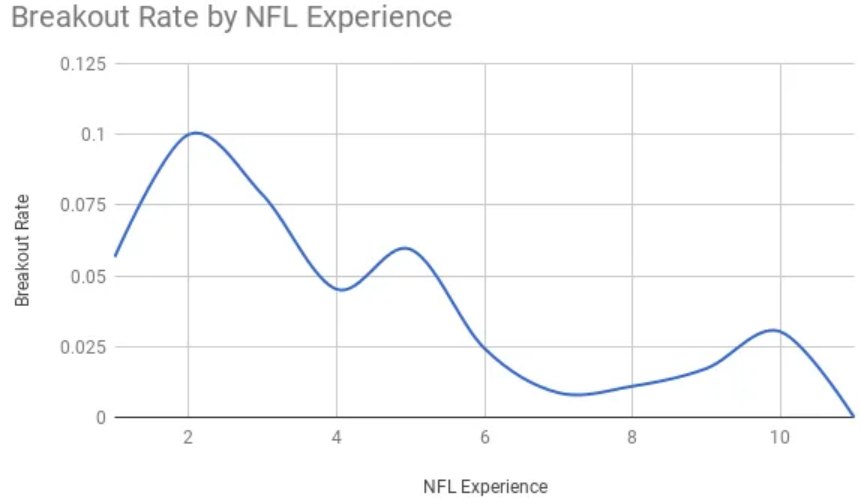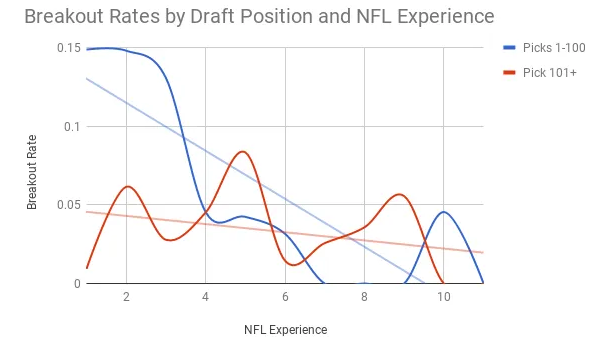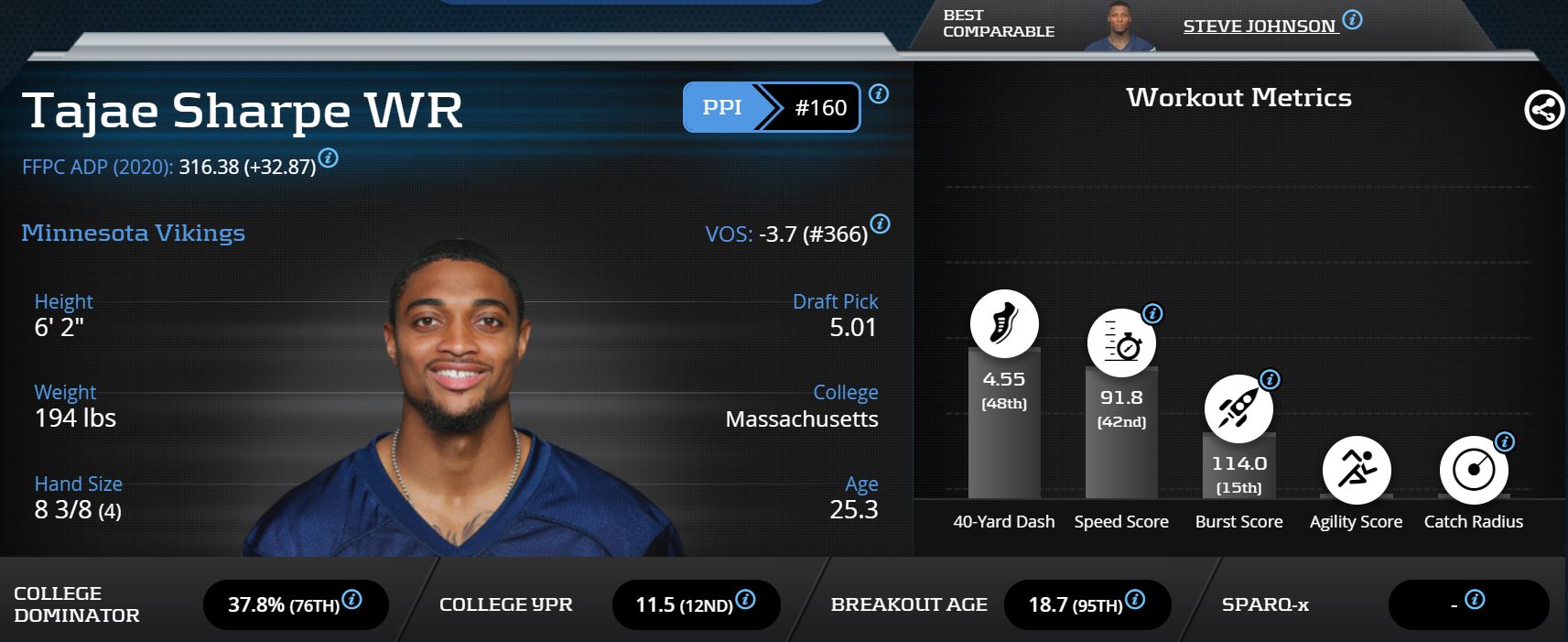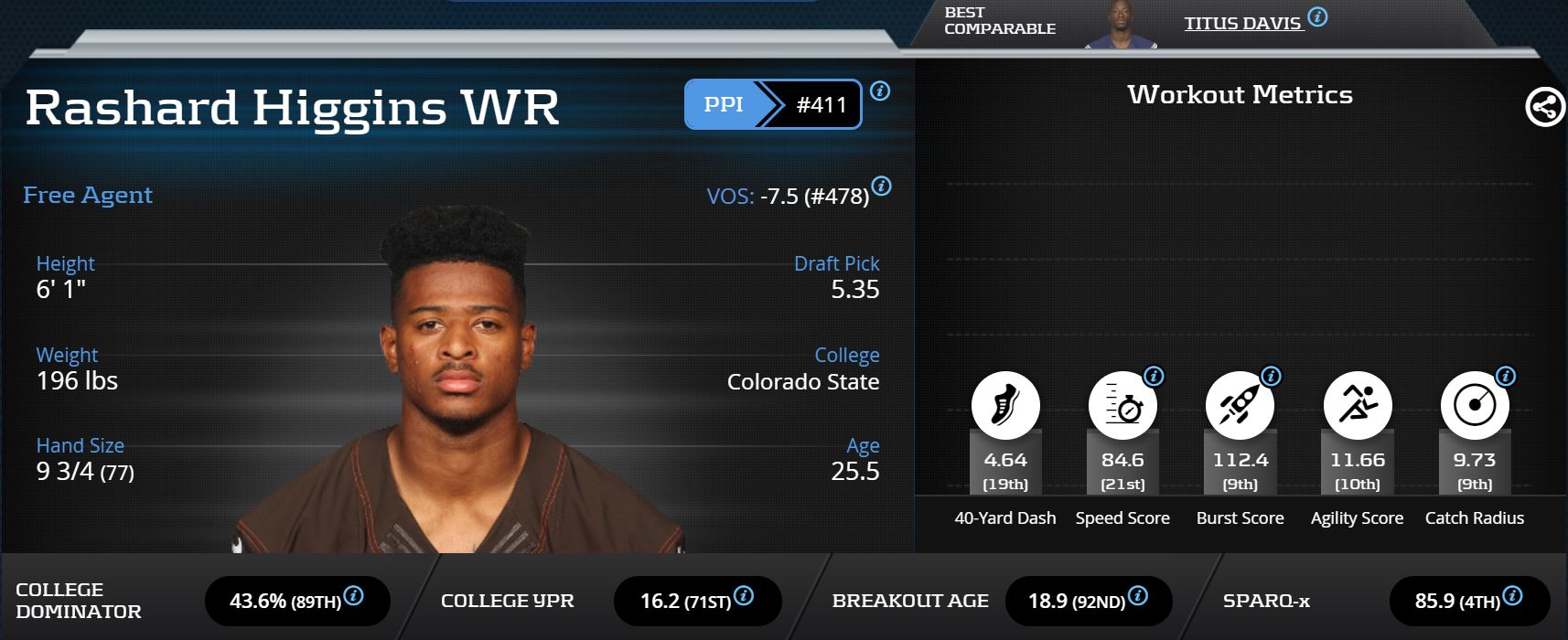I’ve made an effort this offseason to develop a more comprehensive, metrics-based methodology for analyzing players in dynasty leagues. Some of the more notable features of my offseason model:
- Using metrics that have a predictive value for future production. The quality of the metrics used takes precedence over the quantity of metrics used (Keep it simple, stupid).
- Using databases that can automatically be converted to a spreadsheet format. The abundance of data included in Playerprofiler’s Data Analysis Tool combined with its ease of manipulation makes it a worthwhile investment.
- Incorporating publicly available and free data, when appropriate. Josh Hermsmeyer’s Air Yards/RACR and Mizelle ADP Utility databases are useful resources.
We analyzed players that have historically broken out separately from those who have not, using at least one career top-24 PPR finish and, for the 2019 rookies, a top-36 PPR finish as an arbitrary benchmark. My analysis of breakout players focuses on their NFL production over the last two years, while college production and Combine metrics are more emphasized in the non-breakout sample.
Fourth and Fifth-Year Breakouts
Part 1 introduced the metrics being used and focused on second-year receivers primed for a 2020 breakout. Part 2 focused on intriguing third-year breakout candidates, and Part 3 will focus on receivers entering their fourth and fifth seasons. In Part 4, we’ll feature a discount Mecole Hardman and a seventh-year Hail Mary.
Blair Andrews’ breakout graph depicts its first depression point in Year 4 of NFL experience. Interestingly, breakout rate bounces back up in Year 5. This is the time many receivers first become free agents and have an opportunity to sprout their wings on a different team. Another interesting component is that a fifth-year receiver taken past Pick No. 100 of their draft is more likely to break out than a fifth-year receiver taken before Pick No. 101. This intuitively makes sense. The higher capital draft picks usually will have received plenty of opportunity to break out by this point in their careers.
Later picks/undrafted free agents, however talented, will naturally have a more difficult time early in their career currying the favor of the coaching staff over perceptibly more talented early round picks. This phenomenon may be borne out with Jakobi Meyers and N’Keal Harry in New England. The Year 5 breakout sample is biased towards #good players that were not only talented enough to have earned their second NFL contract, but also overcame poor draft capital. This information is somewhat of a death knell for Will Fuller (frustratingly, injuries have been his primary deterrent) and Sterling Shepard. They’re both entering their fifth year, were drafted before Pick No. 101, and have never finished in the Top 24 in PPR scoring at any point of their careers.
Tajae Sharpe and Rashard Higgins
Former unrestricted free agent Tajae Sharpe and current UDFA Rashard Higgins share eerily similar profiles:
- Both 25 years old and born two months apart.
- Both selected outside of the top 100 draft picks, landing on the more favorable breakout curve for fifth-year receivers.
- Excellent Breakout Ages of 18.7 and 18.9, respectively.
- Weighing 194 and 196-pounds, respectively.
- Slot Rates of 31.7 -percent and 29.7-percent, respectively.
- Two-year yards per target averages of 8.05 and 7.80 respectively, ranking No. 17 and No. 19 of the 51-player non-breakout sample.
Sharpe generally performed better in the highlighted metrics last season, including an enticing 14.6 (No. 14 among qualified wide receivers) Average Target Distance (ATD) in 2019. He earned playing time, however modest, with a 50.9-percent (No. 120) regular season Snap Share and six targets in three playoff games. His reward was a one-year $1 million deal from the Minnesota Vikings. Higgins never carved out a meaningful role in Cleveland’s offense in 2019, especially after suffering a knee sprain in Week 1 that cost him four games. He does have the higher yardage total in a single season, with 572 yards on 53 targets in 2018.
Wide receiver production is the most difficult to find on waivers during the season. Those who held on to Sharpe in deeper leagues were rewarded with a potential multi-week, early-season starter. Players like he and Higgins, late-round picks who have managed to hang around the league for a few years, should be held on to through free agency in lieu of a less essential backup running back, quarterback or tight end. Even the moderate bump in production that a change of scenery may provide can pay dividends for a fantasy squad, especially as injuries pile up.
Kendrick Bourne
Entering his fourth season, the likelihood of Kendrick Bourne‘s breakout has grown increasingly elusive. Still, he is worth touting, performing well enough in the highlighted metrics and showing enough on the field this year. The earlier graph indicates that his undrafted label is neither a positive or negative in his chances of a breakout. Of the sample of fourth-year receivers analyzed, Bourne is the third-youngest, has the second lowest Breakout Age at 19.1, third-highest two-year yards per target average at 7.7, and third-highest Slot Rate at 28.2-percent.
Check out Kendrick Bourne on PlayerProfiler’s Updated Dynasty Rankings and Projections:
Bourne’s 10 targets in three playoff games, despite generally positive Game Script, speaks to San Francisco’s increasing confidence in the former Eastern Washington product. Emmanuel Sanders‘ departure opens up increased Opportunity Share, and San Francisco’s likely regression from its 31st-ranked early down pass rate in neutral game script opens up additional raw volume. Any of Bourne’s remaining dynasty value has been a casualty of Rookie Fever. He falls outside of the top 150 in positional ADP as of March 2020. This presents an even clearer buying opportunity.







